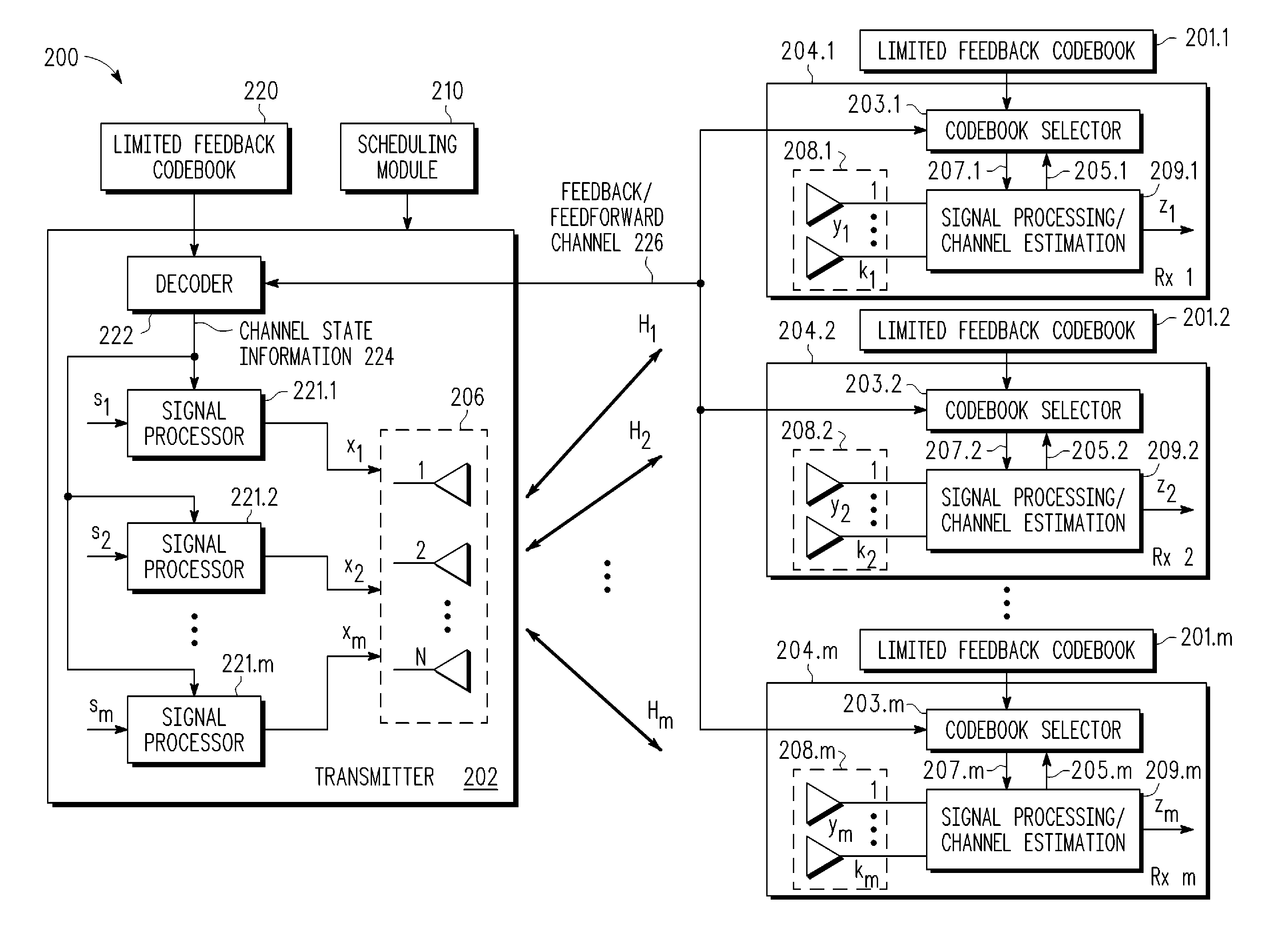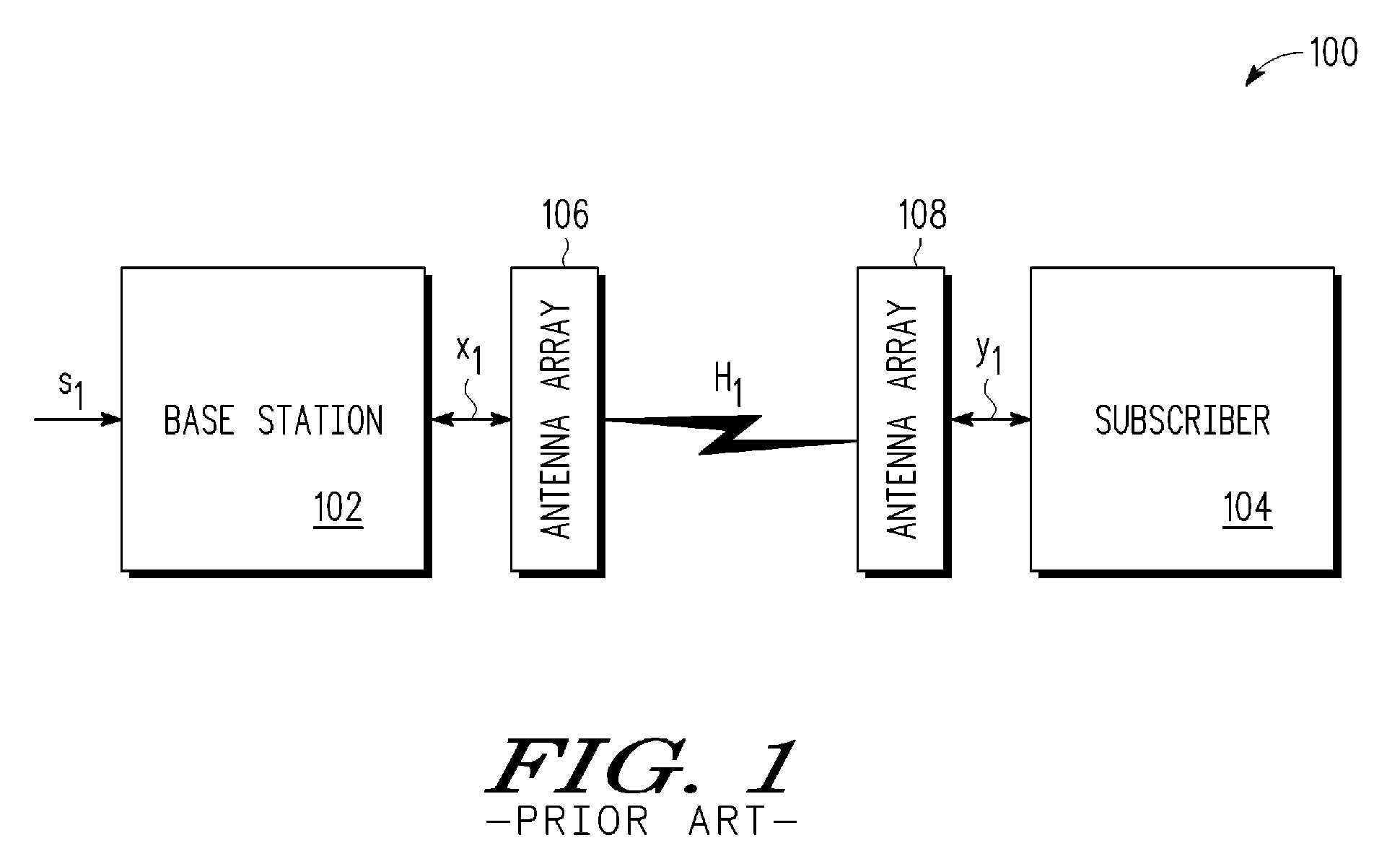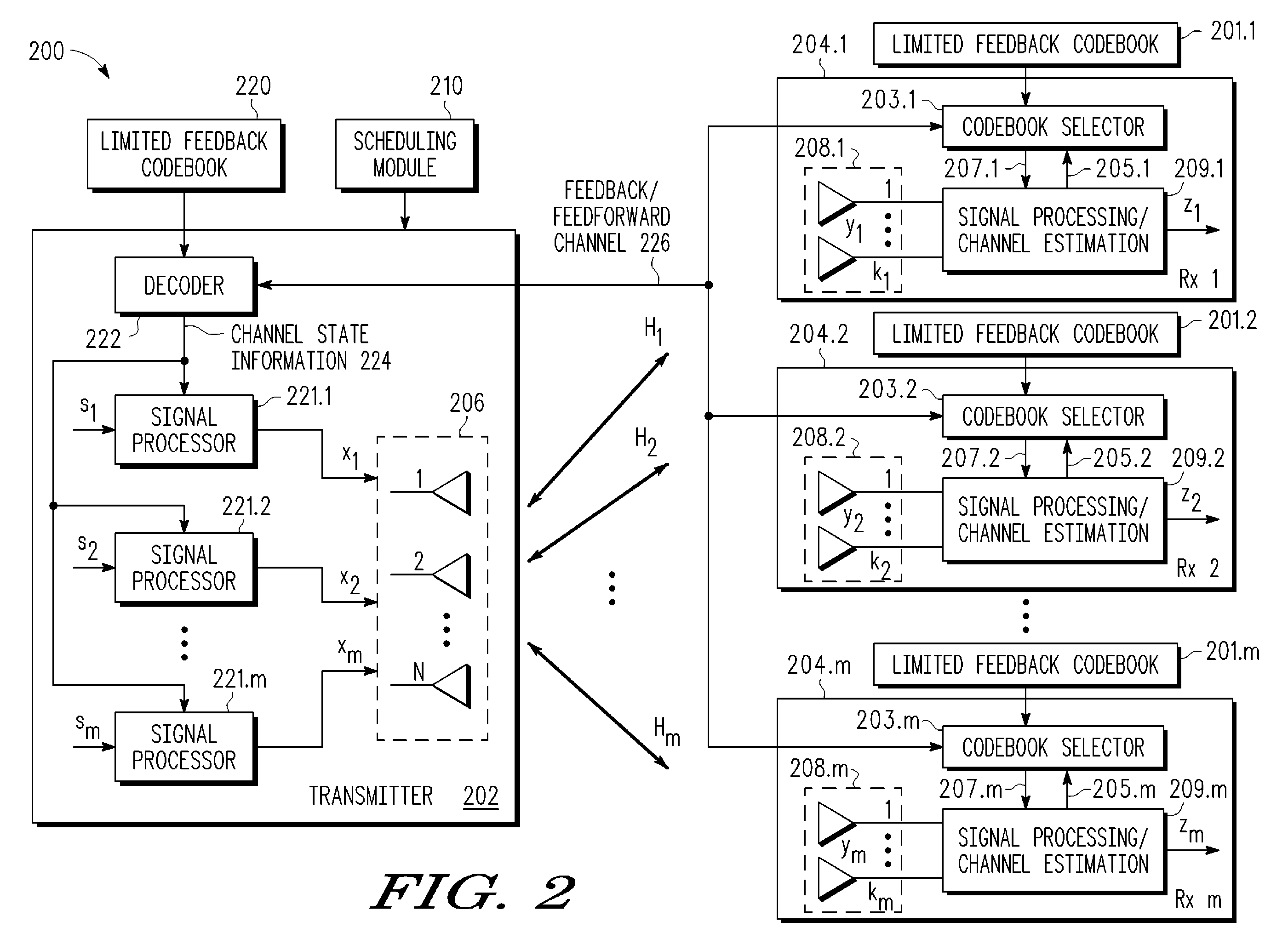Feedback scheduling to reduce feedback rates in MIMO systems
- Summary
- Abstract
- Description
- Claims
- Application Information
AI Technical Summary
Problems solved by technology
Method used
Image
Examples
Embodiment Construction
[0020]A feedback control system and methodology are described for use in controlling precoder feedback in multi-input, multiple output (MIMO) systems. A scheduler at a base station defines a criterion / criteria for users to constrain or reduce the precoder feedback rate by controlling which users can feed back precoding weights and how much feedback can be sent. By generating and broadcasting feedback control criterion / criteria at the base station, each receiving device can use the feedback control criterion / criteria to determine a feedback constraint so that the receiving devices do not needlessly feed back precoding information to the base station. For example, each receiving device can evaluate the feedback control criterion / criteria to determine if precoding information is to be fed back by the receiving device and / or how much feedback can be sent. In a selected embodiment, feedback is scheduled using a predetermined schedule (e.g., round-robin) which allows each receiver / user to...
PUM
 Login to View More
Login to View More Abstract
Description
Claims
Application Information
 Login to View More
Login to View More - R&D
- Intellectual Property
- Life Sciences
- Materials
- Tech Scout
- Unparalleled Data Quality
- Higher Quality Content
- 60% Fewer Hallucinations
Browse by: Latest US Patents, China's latest patents, Technical Efficacy Thesaurus, Application Domain, Technology Topic, Popular Technical Reports.
© 2025 PatSnap. All rights reserved.Legal|Privacy policy|Modern Slavery Act Transparency Statement|Sitemap|About US| Contact US: help@patsnap.com



